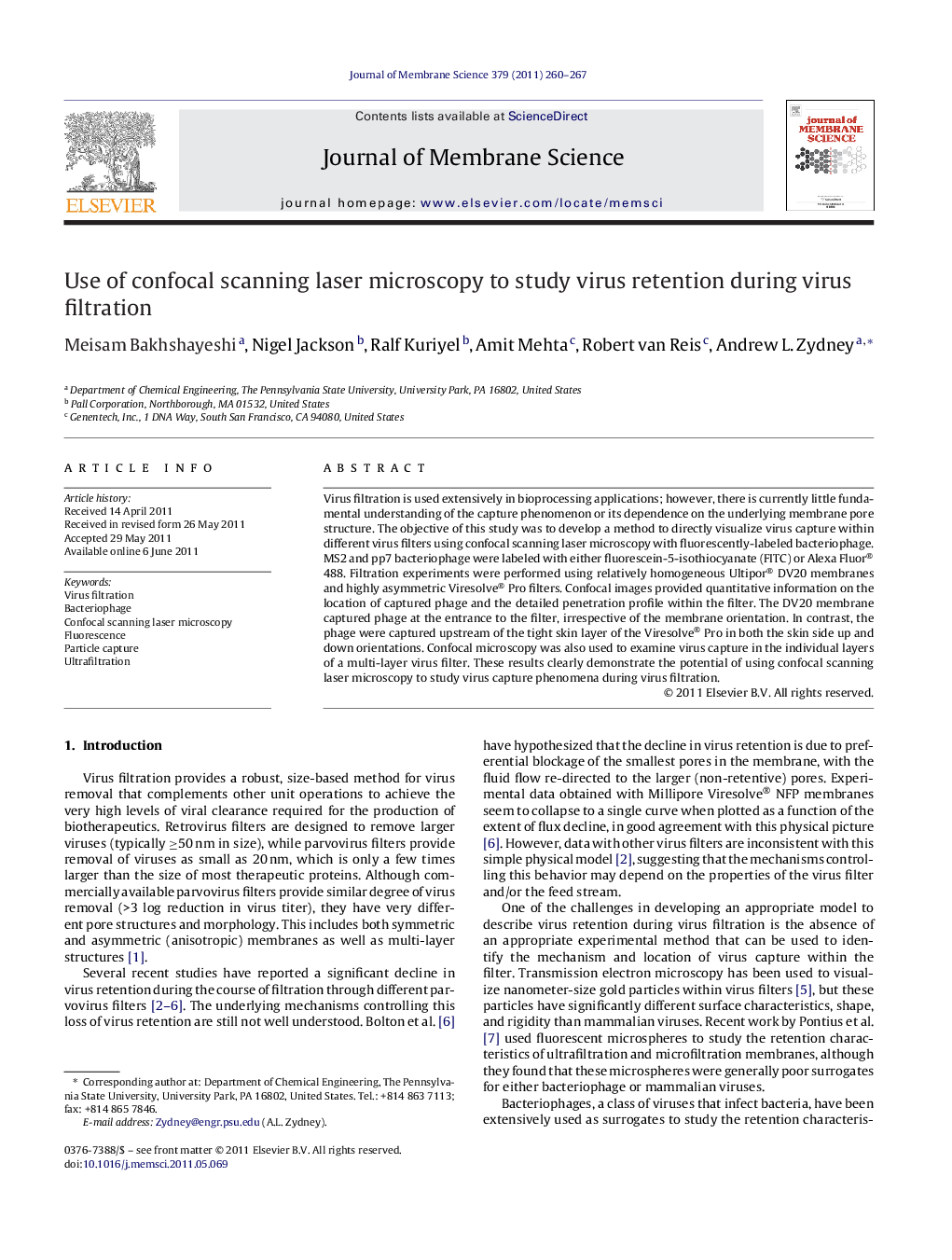| Article ID | Journal | Published Year | Pages | File Type |
|---|---|---|---|---|
| 635546 | Journal of Membrane Science | 2011 | 8 Pages |
Virus filtration is used extensively in bioprocessing applications; however, there is currently little fundamental understanding of the capture phenomenon or its dependence on the underlying membrane pore structure. The objective of this study was to develop a method to directly visualize virus capture within different virus filters using confocal scanning laser microscopy with fluorescently-labeled bacteriophage. MS2 and pp7 bacteriophage were labeled with either fluorescein-5-isothiocyanate (FITC) or Alexa Fluor® 488. Filtration experiments were performed using relatively homogeneous Ultipor® DV20 membranes and highly asymmetric Viresolve® Pro filters. Confocal images provided quantitative information on the location of captured phage and the detailed penetration profile within the filter. The DV20 membrane captured phage at the entrance to the filter, irrespective of the membrane orientation. In contrast, the phage were captured upstream of the tight skin layer of the Viresolve® Pro in both the skin side up and down orientations. Confocal microscopy was also used to examine virus capture in the individual layers of a multi-layer virus filter. These results clearly demonstrate the potential of using confocal scanning laser microscopy to study virus capture phenomena during virus filtration.
Graphical abstractFigure optionsDownload full-size imageDownload high-quality image (115 K)Download as PowerPoint slideHighlights► Confocal scanning laser microscopy method developed to study virus capture. ► Images obtained of fluorescently-labeled bacteriophage captured within virus filtration membranes. ► Results with Viresolve® Pro and Ultipor® DV20 show effects of membrane structure on virus capture. ► Technique provides first direct measure of virus capture within filters.
